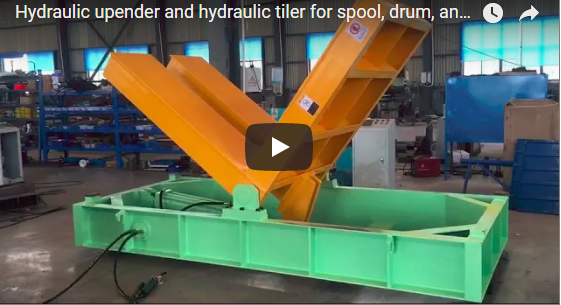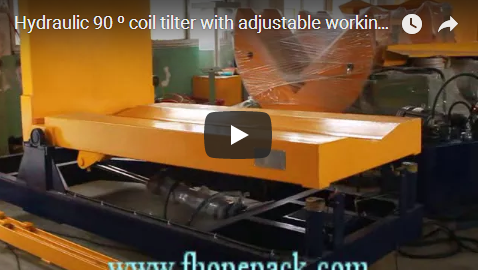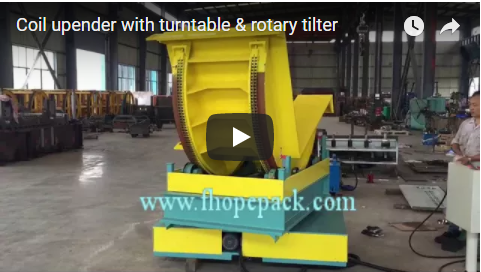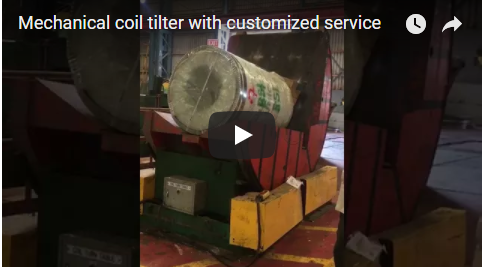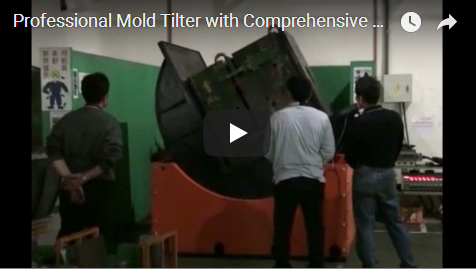Mastering Coil Orientation: The Role of Tilters and Upenders in Metal Fabrication
Handling heavy steel coils is a fundamental challenge in metal fabrication, particularly within steel processing facilities and slitting lines. Safely and efficiently rotating these coils between vertical (eye-to-sky) and horizontal (eye-to-wall) orientations is crucial for seamless workflow integration, preventing material damage, and ensuring operator safety. Coil tilters, often referred to as coil upenders, are specialized machines designed precisely for this task.
The video below demonstrates a typical coil tilter/upender in action, showcasing its straightforward operation in repositioning strapped coils.
This guide delves deeper into the function, benefits, technical aspects, and practical considerations of using coil tilters and upenders in demanding industrial environments.
1. Understanding Coil Tilters and Upenders
At their core, coil tilters and upenders are material handling devices engineered to rotate heavy, cylindrical objects like steel or aluminum coils by 90 degrees. Their primary function is to change the coil's orientation to suit subsequent processes or handling methods.
- From Vertical to Horizontal: Coils often arrive or are stored vertically (eye-to-sky). A tilter rotates them to a horizontal position (eye-to-wall) for easier loading onto payoff reels for slitting or stamping lines, or onto specific types of conveyors or transport vehicles.
- From Horizontal to Vertical: Conversely, coils processed or transported horizontally might need to be upended to a vertical orientation for storage, banding, or specific lifting requirements using C-hooks or other crane attachments.
These machines eliminate the precarious and often hazardous manual methods or makeshift solutions previously used for coil repositioning.
2. Operational Principles and Core Components
While designs vary, most coil tilters operate on a similar principle involving a rotating platform or cradle:
- Drive System: Rotation is typically powered by either an electro-mechanical system (motor and gearbox) or a hydraulic system (cylinders and power pack). Electro-mechanical drives are often preferred for their clean operation and precise control, while hydraulics can offer high power density for extremely heavy loads.
- Structure: Key components include a robust base frame providing stability, a rotating structure (which may feature a flat deck, a V-shaped saddle to cradle the coil, or even integrated conveyors), and the drive mechanism.
- Controls: Operation is usually managed via a simple push-button pendant or a more integrated PLC (Programmable Logic Controller) system, allowing for start/stop and sometimes variable speed control. Safety interlocks are critical control components.
3. Key Benefits in Metal Fabrication Operations
Integrating a dedicated coil tilter/upender into a production line or handling process offers significant advantages:
- Enhanced Safety: Dramatically reduces the risks associated with manually manipulating heavy coils, minimizing potential crush injuries, strains, and accidents caused by unstable loads. Provides a controlled, predictable rotation.
- Improved Efficiency: Significantly speeds up the coil reorientation process compared to using overhead cranes with complex rigging or multiple forklift maneuvers. Cycle times are typically measured in seconds or minutes, depending on the size and rotation mechanism.
- Prevention of Coil Damage: Ensures smooth and stable rotation, protecting sensitive coil edges and surfaces from dents, scratches, or warping that can occur with improper handling. This is crucial for maintaining material quality, especially for pre-painted or surface-critical metals.
- Streamlined Workflow Integration: Facilitates a smoother transition of coils between different stages: receiving, storage, feeding into processing lines (like slitting lines or presses), packaging, and shipping. It allows coils to be presented in the optimal orientation for the next process or handling device (e.g., conveyor, crane, forklift).
4. Technical Specifications and Selection Criteria
Choosing the right coil tilter requires matching the machine's capabilities to the specific application needs. Key parameters include:
- Load Capacity: Ranging from a few tons for smaller operations up to 50 tons or more for large steel service centers. Always select a capacity comfortably above the maximum coil weight handled.
- Coil Dimensions: The machine must accommodate the range of coil diameters (OD and ID) and widths processed in the facility. Platform size and design (flat, V-saddle) are critical.
- Platform/Table Size: Must be sufficient to fully support the coil's footprint during rotation.
- Rotation Speed/Cycle Time: Needs to align with production Takt time or handling requirements. Faster speeds improve throughput but require robust engineering.
- Drive Type: Electro-mechanical or hydraulic, based on load, duty cycle, environmental factors (cleanliness needs), and maintenance preferences.
- Platform Design:
- Flat Deck: Versatile for various load types.
- V-Saddle: Provides better stability specifically for coils.
- Conveyorized: Allows for automated loading/unloading.
- Safety Features: Essential elements include limit switches to control rotation angle, emergency stop buttons, optional perimeter guarding or light curtains, and mechanical locking mechanisms.
- Power Requirements: Voltage and phase required for operation.
- Installation Footprint: Space needed for the machine and safe operating clearance.
5. Integration and Operational Experience
Successfully implementing a coil tilter involves more than just the machine itself:
- Process Flow Analysis: Determine the optimal location within the material flow to minimize unnecessary handling steps. Consider integration with existing overhead cranes, forklifts, Automated Guided Vehicles (AGVs), or conveyor systems.
- Operator Training: Ensure personnel are thoroughly trained on safe operating procedures, load centering, control usage, and emergency protocols.
- Maintenance Schedule: Adhere to manufacturer recommendations for lubrication, inspection of structural components, drive system checks, and safety feature testing to ensure long-term reliability and safety.
- Customization: Many manufacturers offer customization options, such as specific platform surfaces (e.g., non-marring materials), specialized cradles, varying degrees of automation, and integration with plant-wide control systems.
Conclusion
Coil tilters and upenders are indispensable tools in modern metal fabrication and steel processing environments. By providing a safe, efficient, and controlled method for reorienting heavy coils, they play a vital role in protecting personnel, preserving material quality, and optimizing overall workflow efficiency. Understanding their operational principles, key benefits, and technical specifications allows facilities to select and implement the right equipment, significantly enhancing their coil handling capabilities.
For more information on specific coil handling solutions: https://www.fhopepack.com/Coil_upender.html
info@fhopepack.com

